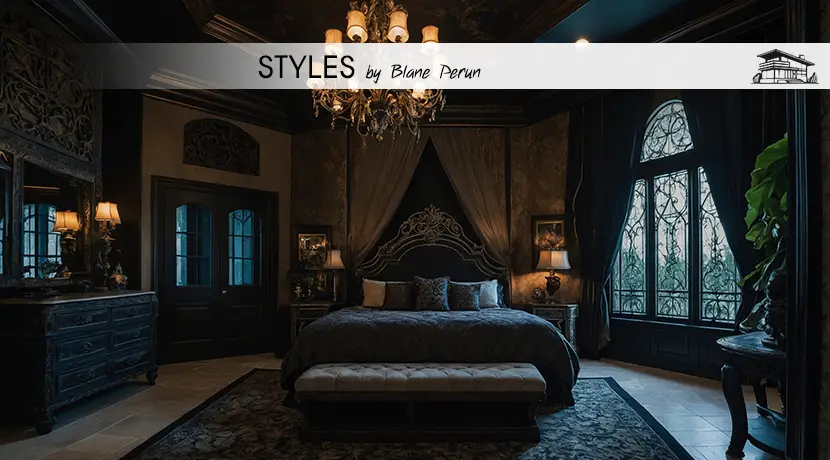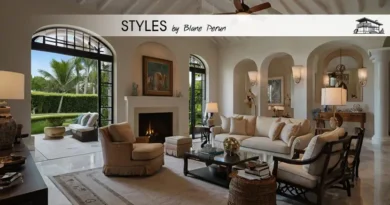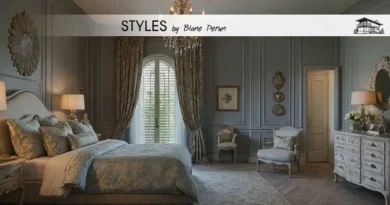Gothic Style
Unveiling the Mystique: A Deep Dive into Gothic Interior Design
Delving into the world of interior design, few styles evoke as much drama, history, and intricate beauty as Gothic Interior Design. Originating from the medieval period, this design aesthetic is renowned for its characteristic arches, rich colors, and a certain solemn grandeur that whispers tales of yore. Often misunderstood as merely dark and brooding, Gothic design is actually about stunning contrasts, intricate details, and a deep appreciation for craftsmanship. It’s a style that invites us to explore the depths of history and artistry, bringing an almost cathedral-like reverence into our living spaces.

The Foundations of Gothic Revival
The Architecture of Emotion
At the heart of Gothic Interior Design is its architecture – an aspect that sets the tone for any space aspiring to this style. The pointed arches, ribbed vaults, and flying buttresses are not just structural elements; they’re expressions of a design language steeped in emotion and spirituality. These architectural features, originally intended to draw the eye upwards in awe and reverence in cathedrals, bring a similar verticality and grandeur to interior spaces. The use of such elements in a home can transform mundane areas into spaces of wonder and contemplation.
Elements and Materials
A pivotal aspect of Gothic interior aesthetics is the choice of elements and materials. Stone and woodwork, often dark-stained or left in their natural, rugged beauty, play significant roles. Stained glass, another hallmark, adds vibrant splashes of color that dance with the light. Fabrics are sumptuous and heavy, with velvets and brocades adding to the sensory experience. Each material and element is chosen for its ability to convey depth, texture, and a sense of the ancient, making every object in a Gothic-inspired room a piece of a larger narrative.
Design Details and Decor
Furnishing with a Story
In Gothic Interior Design, every piece of furniture tells a story. From ornately carved wooden chests that could belong in a medieval castle to wrought-iron chandeliers that mimic those found in ancient cathedrals, the furnishings are all about detail and history. This isn’t just about aesthetics; it’s about creating a connection to the past through objects that are both functional and artistic. It’s about blending history with modern comfort in a way that is both breathtaking and intimate.
Art and Accents
The art and accents in a Gothic space are as much about storytelling as they are about decoration. Wall tapestries depicting ancient scenes, sculptures that echo the forms of medieval gargoyles, and artwork that draws from Gothic motifs all contribute to the atmosphere. Even the use of color is deliberate, with jewel tones like deep reds, greens, and blues adding richness and depth. These accents are not random but are carefully selected to complement the architectural and furnishing choices, creating a cohesive and immersive environment.
Modern Interpretations and Adaptations
Blending the Old with the New
Gothic Interior Design in the modern context is about more than just replicating the past; it’s about adapting its principles to contemporary living. This means finding a balance between the ornate and the functional, the historic and the modern. Designers might incorporate Gothic elements through statement pieces or architectural details, using them to add drama and character to otherwise minimalist spaces. It’s a way of paying homage to the past while catering to the needs and aesthetics of the present.
Lighting and Atmosphere
Lighting plays a crucial role in Gothic design, used not just to illuminate but to create mood and ambiance. Modern adaptations often include innovative lighting solutions that mimic the ethereal glow of candles or the colorful luminescence of stained glass windows. This creates an atmosphere that is both mysterious and inviting, a space where the historic and the contemporary meet in a dance of light and shadow.
Gothic Interior Design is more than just a style; it’s an exploration into the depth of history, artistry, and emotion. It invites us to create spaces that are not just lived in but experienced, where every element tells a story and every room feels like a chapter from a grand, unfolding tale. It’s a testament to the enduring appeal of Gothic aesthetics and its ability to inspire and transform.

FAQs
What defines Gothic Interior Design?
Gothic Interior Design is characterized by its dramatic and ornate features, including pointed arches, intricate wood and stone work, rich colors, and a general emphasis on verticality and grandeur. This style brings in elements from the Gothic architectural era, infusing spaces with a sense of history and majesty.
How can I incorporate Gothic Interior Design elements into a modern home?
Incorporating Gothic elements into a modern home can be done through architectural details like pointed arches or ribbed vaults, using dark-stained wood and stone materials, adding stained glass for color, and selecting furnishings and art that echo medieval aesthetics. The key is to blend these elements with modern comforts and functionality.
Are dark colors a must for Gothic Interior Design?
While dark colors are often associated with Gothic design, they are not a necessity. Gothic Interior Design also makes use of rich jewel tones like deep reds, blues, and greens. The important aspect is the intensity and depth of the colors used, rather than their darkness.
What role does lighting play in Gothic Interior Design?
Lighting is crucial in Gothic Interior Design, used not just for illumination but to create an atmospheric mood. It often mimics the soft, diffused light of candles or the colorful effects of stained glass, adding to the overall drama and depth of the space.
Can Gothic Interior Design be comfortable and functional?
Absolutely. Modern interpretations of Gothic Interior Design balance the dramatic and ornate elements of the style with modern comforts and functionality. The goal is to create spaces that are not only visually compelling but also livable and suited to contemporary lifestyles.





